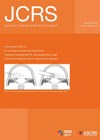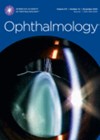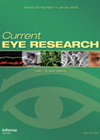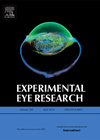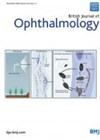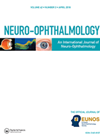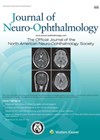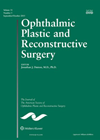Delayed angle closure in pseudophakia and repeated intravitreal therapy
The authors report two cases of acute angle closure many years after uneventful cataract surgery and posterior chamber intraocular lens (IOL) implantation. Both patients had neovascular age-related macular degeneration (AMD) and received regular intravitreal injections (24 and 25 injections in...
Customised corneal crosslinking with supplemental oxygen
In this prospective interventional case series, the authors investigate using supplemental oxygen delivery during epithelium-on corneal crosslinking (CXL) with specially designed oxygen delivery goggles. Twenty-seven eyes of 24 patients underwent epi-on CXL with Riboflavin and Ultraviolet-A irradiation. At six months...
How does low-concentration atropine reduce progression of myopia?
This is a double-blind, randomised, placebo-controlled trial evaluating the effects of low-concentration atropine (0.05%, 0.025%, 0.01%) on ocular biometrics of myopic children. The aim is to determine what aspect of ocular biometrics low-concentration atropine influenced in reducing the progression of...
Topical nonsteroidal ant-inflammatory drugs (NSAIDs) in patients undergoing cataract surgery
Inflammation is a major risk factor for the development of cystoid macular oedema (CMO) after cataract surgery, leading to breakdown of the blood-retina barrier. There is a correlation between severity of CMO and level of postoperative inflammation. Laser flare meter...
Characteristics of limbal lymphatic vasculature on confocal microscopy
This ex vivo study aims to describe the morphological characteristics of the human limbal lymphatic vasculature using confocal microscopy and immunofluorescence. Twelve corneal specimens are obtained from human donor eyes. These corneal buttons are not suitable for transplantation due to...
Review of pathogenesis of Acanthamoeba keratitis
In this review, the author summarised the current microbiomic and immunological evidence related to the pathogenesis of Acanthamoeba keratitis (AK). AK has been described for almost 50 years, but the exact biology of the disease remains perplexing. Acanthamoeba spp. are...
SLT versus medication for OAG
This paper appraised existing randomised clinical trials (RCTs), which compared selective laser tabeculoplasty (SLT) with medical therapy for open-angle glaucoma (OAG), and performed a systematic review and meta-analysis. A total of 1229 patients in eight trials were included from PubMed,...
Using contrast acuity and rapid number naming in Huntington’s disease
This study aimed to evaluate afferent and efferent visual function in Huntington’s disease (HD). HD is often portrayed by abnormal saccadic eye movements and afferent visual pathway involvement however these are poorly characterised and difficult to quantify at the bedside....
Pupil responses in diabetes
This study aimed to investigate pupillary involvement in patients with type 2 diabetes mellitus (DM) and to evaluate any relationship between severity of diabetic retinopathy (DR) and pupillary responses. Participants included 133 individuals in four groups: proliferative DR (n=21), non-proliferative...
Referrals to neuro-ophthalmology
The authors present the findings of a retrospective records review of 300 new patients at a single tertiary neuro-ophthalmology clinic by two ophthalmologists. The case selection was taken from 45 randomly selected days over a four-year period. The authors reported...
Cutaneous malignant melanoma metastasis to pseudophakic lens
Metastases to the eye and orbit are rare and intraocular cutaneous malignant melanoma metastasis (ICMM) is exceedingly rare, representing around 5%. There have only been three previous cases of ICMM to the lens in the literature, all of which presented...
Orbital Schwannomas
This is a large case series of orbital Schwannomas managed at a single centre over a 26-year period. Twenty Schwannomas are reported, all but one of which was managed surgically. The tumours were all benign, had an insidious onset and...


